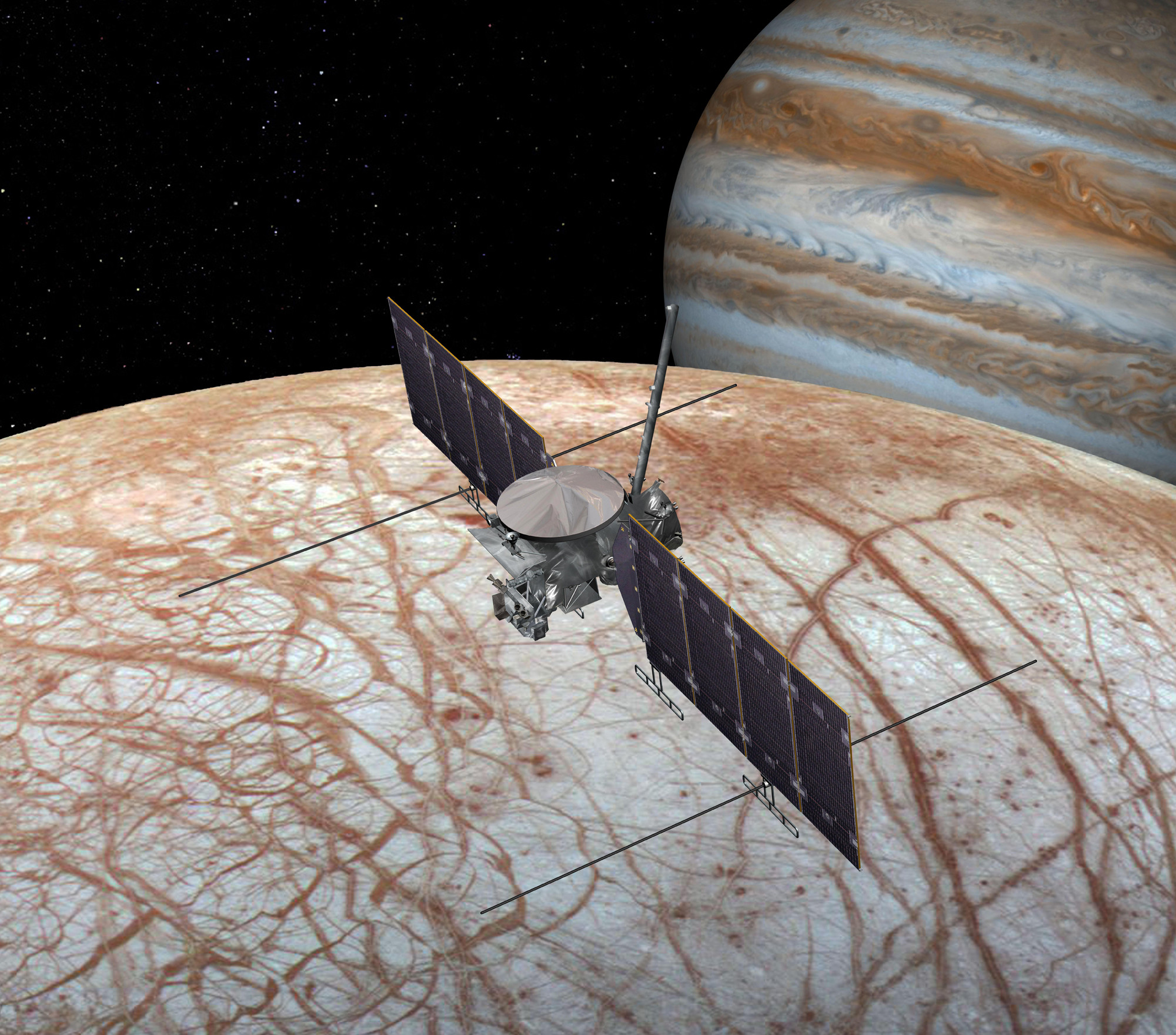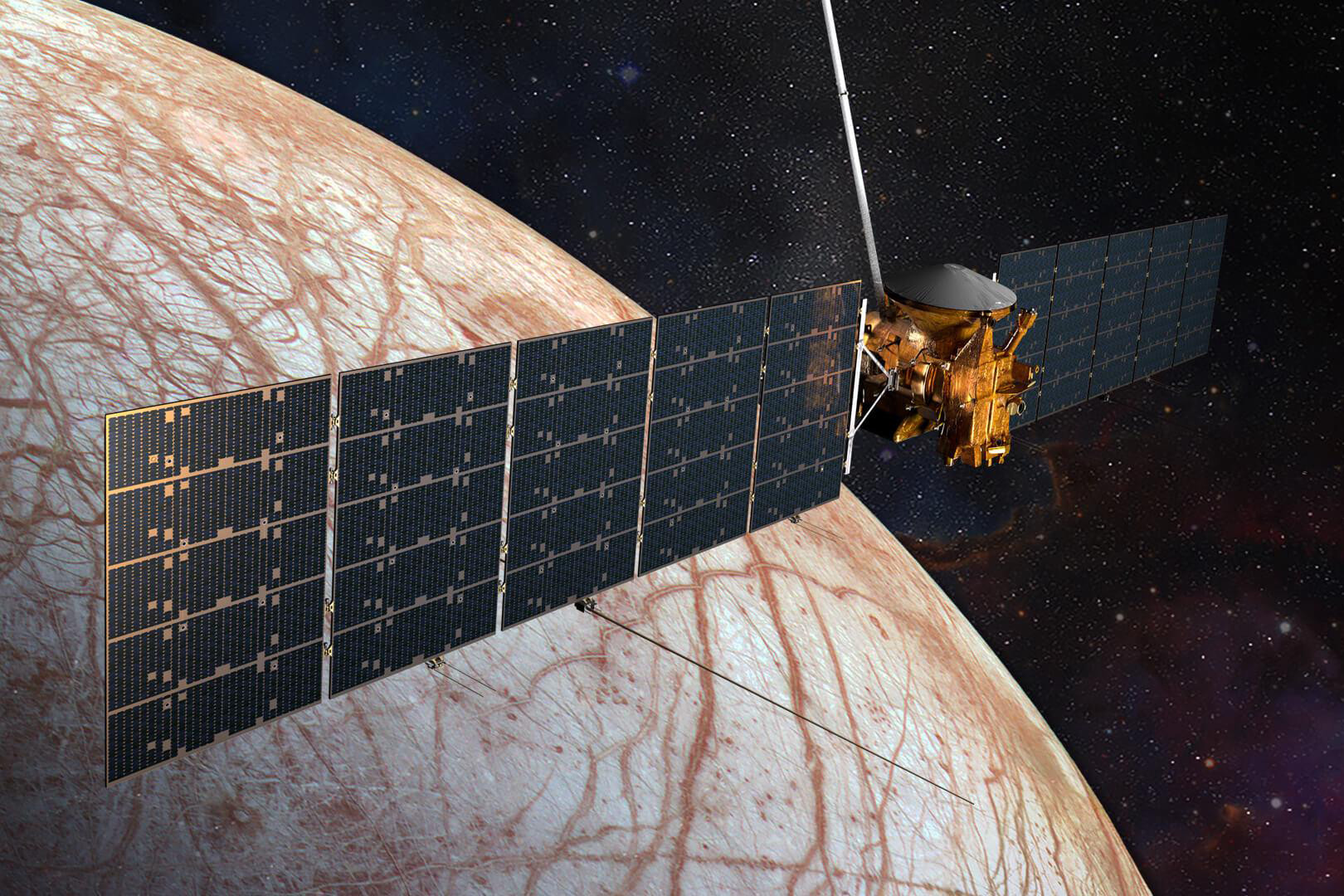Europa Clipper: A Journey to a Potential Alien Oasis
This month, Nasa is launching its Europa Clipper mission, a monumental endeavor aimed at deciphering the secrets of Jupiter's enigmatic moon, Europa. This ambitious undertaking, initially scheduled for October 10th, 2024, was delayed due to Hurricane Milton and is now set to launch on Monday, October 14th, 2024, at 6:06 PM (French time). The mission's ultimate objective? To determine if Europa, shrouded beneath a thick layer of ice, harbors extraterrestrial life in its vast, hidden ocean.
Europa, a captivating celestial body nestled within Jupiter's gravitational embrace, has long captivated the imaginations of scientists and science enthusiasts alike. Its icy surface, marked by intricate, crisscrossing lines known as linea, hints at the presence of a global ocean teeming with potential for life as we know it. The captivating allure of Europa lies in its potential to host an alien ecosystem, making it a prime target for astrobiological exploration.
Europa Clipper: An Unprecedented Mission of Discovery
Europa Clipper, a colossal spacecraft spanning the length of a basketball court, embarks on a remarkable journey to Jupiter's enigmatic moon. Its path, however, is not a straight line, as it requires the gravitational assistance of Venus and Earth to propel it towards its final destination. This intricate trajectory will see Europa Clipper traverse an astonishing three billion kilometers before reaching Jupiter, despite the fact that Jupiter itself is only about 780 million kilometers from Earth. The sheer scale and complexity of this mission highlight its significance and the groundbreaking discoveries it promises.
The Allure of Europa: A Moon with a Hidden Ocean
Europa, one of Jupiter's 95 moons, is the fourth largest and is visible with binoculars as a tiny star orbiting Jupiter. But it is the most intriguing, capturing the attention of scientists worldwide. Europa, resembling a fusion of our own moon and Antarctica, is a giant ball of frozen water on its surface, a fascinating juxtaposition of icy exterior and potentially teeming inner ocean. And just like our moon, Europa presents the same face to its planet, a testament to its unwavering gravitational bond.
The Potential for Life Beneath Europa's Icy Shell
Beneath Europa's icy shell, a global ocean has been identified and confirmed with a high degree of certainty, notably by the Galileo probe. The volume of liquid water is estimated to be twice that of all Earth's oceans and seas combined, a colossal reservoir of potential for life. The ocean's existence fuels the scientific community's fascination, as it holds the promise of a unique, extraterrestrial ecosystem. This underwater realm is also subjected to tidal forces from Jupiter's immense gravity, a relentless force that stretches and kneads Europa's icy crust. This constant tug-of-war generates warmth and energy within the ocean, potentially creating conditions conducive to the emergence of life. On Earth, one of the prevailing theories about the origin of life points to hydrothermal vents at the bottom of the ocean, raising intriguing parallels with the environment that might exist within Europa's ocean.
The Search for Extraterrestrial Life: Europa as a Potential Oasis
The question of whether we are alone in the universe remains one of the most profound mysteries of science. Europa, with its tantalizing potential to harbor life, offers a closer-to-home answer than distant exoplanets. While the search for complex life forms like giant squid or whales is unlikely, the presence of bacteria capable of chemosynthesis – generating energy from molecules rather than sunlight – is a distinct possibility. Chemosynthesis, a different mechanism than photosynthesis, allows life to thrive in environments devoid of sunlight.
Europa Clipper's Scientific Arsenal: Unraveling Europa's Secrets
Europa Clipper's scientific instrumentation is the heart of its mission, serving as the spacecraft's sensory organs. Its instruments, comprising nine primary components, make up a significant portion of its mass, with the exception of fuel. These instruments are meticulously designed to gather data and unveil the secrets of Europa, offering a glimpse into a world beyond our own.
Europa Clipper will make close approaches to Europa's surface, dipping as low as 25 kilometers, essentially skimming the ice giant. The mission's strategy involves a series of flybys, with the spacecraft orbiting Jupiter while conducting multiple close passes over Europa. This approach allows for a comprehensive investigation of the moon's surface and its potential internal ocean, paving the way for groundbreaking scientific insights.
SUDA: A Spectrometer Hunting for Tiny Signs of Life
Among Europa Clipper's impressive array of instruments, one stands out as particularly promising in the search for extraterrestrial life: SUDA (Surface Dust Analyzer). SUDA is designed to analyze dust particles ejected from Europa's surface, potentially originating from geysers or plumes. Researchers believe that a single dust particle, captured by SUDA, could contain enough material to detect the presence of bacteria as small as S. Alaskensis, a species found in Alaska's waters, a habitat with conditions somewhat comparable to those of Europa's ocean. This breakthrough, if achieved, could signify a crucial step in understanding the potential for life beyond our planet.
A Poem for a Distant World: Ada Limon's Ode to Europa
As Europa Clipper prepares for its historic journey, Ada Limon, the winner of a poetry contest held for the mission, eloquently captures the essence of this celestial exploration with her words:
“And (...) what unites us is water, each drop of rain, Each stream, each pulse, each vein. Oh, second moon, we are also made of water, Of vast, calling seas We are made of wonders too, of loves Big and ordinary, of tiny, unseen worlds, And the need to call out in the night.”
A Journey of Discovery: Europa Clipper's Legacy
The journey of Europa Clipper, a testament to humanity's unwavering curiosity and pursuit of knowledge, holds the potential to rewrite our understanding of the universe and our place within it. This mission represents a pivotal moment in our exploration of the cosmos, as we seek answers to age-old questions about the existence of life beyond Earth. Europa, a celestial beacon of mystery and intrigue, beckons us to explore its hidden depths, promising to reveal the secrets of a world that might harbor life in its frozen embrace. The success of Europa Clipper could not only revolutionize our understanding of the universe but also ignite a new era of exploration, inspiring generations to come to reach for the stars.
The Future of Exploration: A Journey to a Potentially Habitable World
While Europa Clipper's mission focuses on the scientific exploration of Europa, it also sparks a deeper inquiry into the future of humanity. Could Europa, with its potential for life, become a habitable world for our species? While the answer remains uncertain, the possibility of a future home among the stars inspires hope and ignites our imaginations. As we venture further into the cosmos, we are not just searching for answers to scientific questions but also seeking a deeper understanding of our place in the grand tapestry of the universe.
A Glimpse into the Unknown: The Mysteries of Europa Await
As Europa Clipper embarks on its six-year journey, it carries with it the hopes and dreams of countless individuals who yearn to unlock the secrets of the cosmos. The moon Europa, a celestial enigma wrapped in a veil of ice, beckons us to uncover its mysteries, promising to reveal wonders that could forever alter our perception of life, our place in the universe, and the very fabric of our existence.


















